Support for Eating Disorder Recovery
Regardless of diagnostic criteria, we offer a unique treatment approach, CAMSA®, that helps patients regain health through Connection, Acceptance, Mindfulness, a Sense of Self, and Action – the foundations of true empowerment.
This approach, offered in a safe and very supportive environment, helps people with any type of eating disorder to develop healthier coping skills. We help patients get on the best path to a successful, sustained recovery.
Other Specified Feeding or Eating Disorder (OSFED)
OSFED is a form of disordered eating where individuals suffer from abnormal thoughts and behaviors related to food, eating, and body image. Patients do not meet the full diagnostic criteria for a specific eating disorder such as anorexia, bulimia, or binge eating disorder. However, individuals suffering from OSFED usually need the same level of treatment and support as patients with more formal diagnoses.
–

–
Examples of OSFED include:
• Atypical Anorexia Nervosa – The diagnostic criteria for anorexia is met, except the individual is within a normal weight range despite significant weight loss.
• Bulimia Nervosa (of low frequency and/or limited duration) – The diagnostic criteria for bulimia nervosa is met, except episodes of binge eating and other compensatory behaviors do not occur as often.
• Binge Eating Disorder (of low frequency and/or limited duration) – The diagnostic criteria for binge eating disorder is met, except binge eating behaviors do not occur as often.
• Purging Disorder – Reoccurring purging behaviors are used to influence weight or shape without episodes of binge eating.
• Night Eating Syndrome – NES is characterized by recurrent episodes of eating late in the evening or at night. Individuals will consume the majority of their daily food intake during this time. NES differs from binge eating disorder in that binge eaters consume large amounts of food in a short period of time, whereas night eaters do not. NES is linked to depression, abnormal sleep patterns, stress, anxiety and hormonal imbalances.
Unspecified Feeding or Eating Disorder (UFED)
Individuals are diagnosed with UFED when their disordered thoughts and behaviors surrounding food and body image do not meet the diagnostic criteria of another eating disorder due to insufficient information. This diagnosis can be changed once more information is gathered or as symptom develop and change.
Avoidant Restrictive Food Intake Disorder (ARFID)
ARFID is about more than being a “picky eater”. It is an eating or feeding disturbance characterized by a persistent failure to meet appropriate nutritional and/or energy needs leading to one or more of the following:
- Significant weight loss
- Significant nutritional deficiency
- Dependency on nutritional supplements
- Impaired Psychosocial functioning
AFRID is not associated with body image issues or how someone perceives their body weight or shape. It can be diagnosed in both adolescents and adults.
–
Diabulimia
Diabulmia is a term, coined by the media, for diabetic patients who purposefully restrict and manipulate their insulin treatments in order to lose weight. This disorder is typically seen in type 1 diabetics and is also referred to by medical professionals as ED-DMT1, Eating Disorder – Diabetes Mellitus Type 1. According to the diagnostic manual, DSM-5, Diabulimia itself is not considered a separate diagnosis; however misuse of medications is a compensatory behavior of bulimia nervosa. This means patients are instead given a dual diagnosis of having both an eating disorder and diabetes or it can be classified as OSFED.
Orthorexia
Orthorexia is not recognized in the diagnostic manual, DSM-5, as an eating disorder but can be classified as a dual diagnosis or OSFED. Orthorexia is a term used to describe obsessive “clean eating” behaviors. It takes “healthful” eating to the extreme where an individual restricts and eliminates so many food groups they often develop nutrition deficiencies. Orthorexia can lead to, or be a cover for, the development of an eating disorder.
Pica
Pica is an eating disorder which involves the consumption of items not recognized as food and do not hold significant nutritional value, such as paint, dirt, paper, chalk, etc.
–
–
Body Dysmorphic Disorder (BDD)
Body Dysmorphic Disorder often co-occurs with an eating disorder. It is defined by the preoccupation and dissatisfaction with specific parts of an individual’s body. This form of body image fixation fuels disorder eating behaviors and can also lead to depression, anxiety and other mental health issues.

Mood & Anxiety Disorders
Mood disorders are psychological conditions characterized by distorted or inconsistent emotional states. This can include irritability, mood swings, depression or elevated moods.
Anxiety disorders are a characterized by a persistent overwhelming worry or fear, which ultimately interferes with one’s quality of life and their ability to effectively function at work, school, or home.
Forms of mood and anxiety disorders include:
- Bipolar Disorder
- Depression
- Personality Disorders (e.g. Dependent, Borderline, Histrionic)
- Self-Injury
- Post-Traumatic Stress Disorder (PTSD)
- Separation Anxiety Disorder
- Social Anxiety Disorder
- Obsessive-Compulsive Disorder (OCD)
- Panic Disorder
